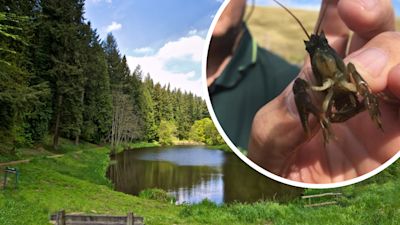Fears as 'plague' kills endangered fish at Gloucestershire beauty spot

A number of endangered and legally-protected fish have been found dead in Gloucestershire, prompting fears of a deadly plague.
Local populations of native white-clawed crayfish have been suffering in the Cinderford and Soudley Brook area.
It is thought an infectious 'crayfish plague' is sweeping the local area, leading to an investigation by Forestry England and the Environment Agency.
Crayfish plague is species-specific and cannot be transferred to humans but the fungal spores responsible for the disease can survive on damp surfaces for 22 days.
To combat the spread of the plague, Forestry England advises for people to:
Clean any mud or vegetation off equipment
Thoroughly dry equipment
Treat with a disinfectant capable of killing fungal spores
Do not use damp equipment in another stream on the same day
Do not allow your dog to swim in surrounding waters
White-clawed crayfish look like miniature lobsters and prefer to hide away under rocks and logs during the day before emerging during the night to eat.
The crayfish are the largest native, freshwater invertebrate in Britain but are now a rare and endangered species following competition with non-native crayfish.
Once crayfish plague is present in a watercourse, the white-clawed crayfish will usually all succumb to the disease.
It usually takes several weeks as the fungus is spread by contact between individual white-clawed crayfish through the water or contact with infected mud.
The disease can be transferred to crayfish in other parts of the catchment via water and mud on damp clothes, footwear, bike tyres, vehicle tyres, fishing or boating equipment or any machinery, or by dogs, horses or livestock.